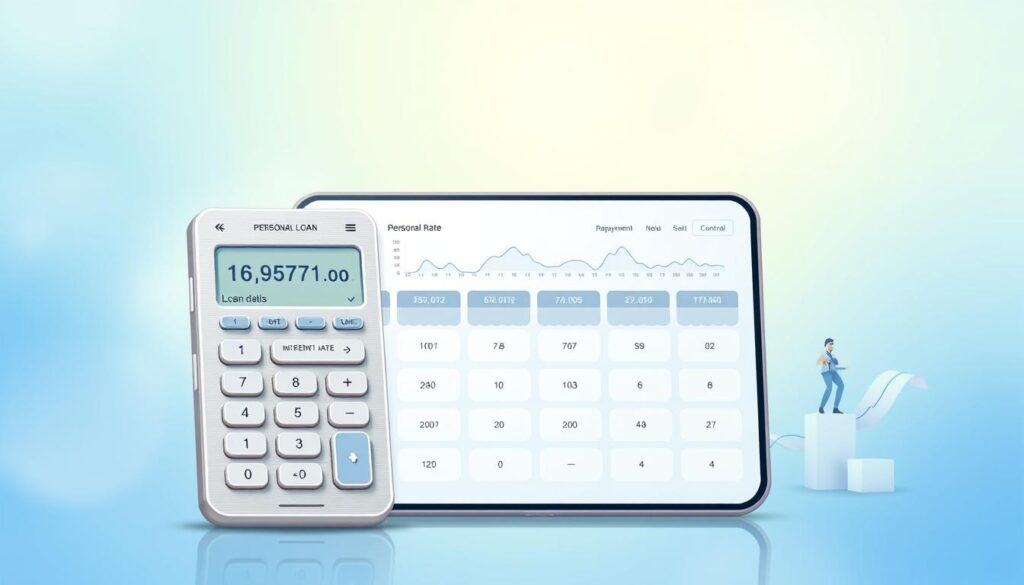Singapore’s lending market offers a wide range of options, with over 10 banks and licensed lenders providing tailored financial products. Whether you need funds for emergencies, big purchases, or debt consolidation, there’s a solution for every situation.
With years of experience, platforms like MoneySmart help compare offers from trusted institutions like DBS and UOB. Competitive rates, such as DBS’s advertised 3.88%, make it easier to find cost-effective choices. Real user feedback, like Xavier Ng’s smooth approval process, adds credibility to these options.
Key Takeaways
- Singapore’s financial market has diverse lending options.
- Major banks like DBS and UOB offer competitive rates.
- Debt consolidation and short-term solutions are available.
- User reviews highlight fast approvals and reliable service.
- Comparing rates helps secure lower interest rates.
Introduction to Personal Loans in Singapore
Financial flexibility becomes essential when facing large expenses or emergencies. A personal loan offers structured repayment plans and competitive interest rates, making it a popular choice for many.
Common Reasons to Borrow
People use these funds for various needs:
- Medical emergencies: 50% of borrowers cover unexpected health costs.
- Weddings: Average $50k celebrations often require extra funds.
- Debt consolidation to simplify high-interest payments.
- Education fees or home renovations.
How Borrowing Works Locally
Singapore’s Monetary Authority (MAS) regulates banks, while licensed moneylenders follow strict caps. Key differences:
| Factor | Banks | Moneylenders |
|---|---|---|
| Minimum Income | $30,000/year | Under $10,000/year |
| Max Rate | ~8.5% EIR | 4% monthly (48% yearly) |
| Approval Time | 3 days | 8 minutes (e.g., Crawfort) |
A $10,000 loan at 8.5% EIR costs $316/month for 3 years ($11,376 total). Meanwhile, moneylenders’ 4% monthly rate compounds quickly—borrow cautiously.
Types of Personal Loans Available
Flexible borrowing solutions cater to diverse financial needs and goals. From structured repayments to revolving credit lines, each option serves distinct purposes.
Term Loans vs. Revolving Loans
Term loans provide fixed amounts with set repayment schedules. Banks like DBS offer rates as low as 3.88% for 1–7 years. These suit planned expenses like weddings or renovations.
Revolving loans, like Citibank’s credit lines, allow repeated borrowing up to a limit. However, variable APRs (15–24%) can lead to higher interest if balances linger.
| Feature | Term Loans | Revolving Loans |
|---|---|---|
| Interest Rate | Fixed (3.88%–20% EIR) | Variable (15–24% APR) |
| Loan Tenure | 1–7 years | Indefinite (monthly interest) |
| Best For | One-time costs | Ongoing cash flow needs |
Secured vs. Unsecured Loans
Secured loans require collateral, like POSB car loans or HSBC mortgage top-ups. These often have lower rates (5.5% EIR for SMEs).
Unsecured loans, such as UOB’s personal credit, need no assets but have stricter income checks. Defaults risk credit damage.
Warning: A $5,000 revolving balance at 24% APR accrues $1,200 yearly. Always compare total costs before committing.
Best Personal Loans in Singapore
When you need funds quickly, knowing your options helps you make smart choices. Whether planning a major expense or covering emergencies, selecting the right product saves money and stress.
Top Bank Loans with Competitive Rates
Major banks offer structured plans with lower interest rates. DBS leads with 3.88% for amounts up to $10,000, while OCBC and UOB provide flexible tenures.
- DBS: 3.88% advertised rate, 1–5 years tenure.
- OCBC: 6.5% EIR, ideal for debt consolidation.
- UOB: 7.1% EIR, fast approvals for salaried individuals.
Banks typically require a monthly income of $2,500+ ($30,000 annually). Compare total costs—a $5,000 loan at 6.5% EIR costs $432/month over 12 months.
Fast Solutions for Urgent Needs
Licensed lenders like Crawfort approve applications in 8 minutes for amounts under $3,000. Rates vary:
| Lender | Rate (Monthly) | Tenure |
|---|---|---|
| Crawfort | 4% | 3 months |
| Lendingpot | 3.5% | 6 months |
Note: A $500 loan at 4% monthly adds $20 interest in the first month. Short terms suit temporary gaps but cost more if extended.
Understanding Loan Interest Rates
Understanding how interest rates work can save you hundreds on borrowed funds. The key lies in spotting the difference between advertised interest rate and effective interest rate (EIR)—the true cost after fees.

Advertised Rate vs. Effective Interest Rate (EIR)
Banks often highlight low advertised rates, but EIR includes hidden costs like processing fees. For example:
- A $10,000 loan at 3.88% advertised rate + $200 fee = 7.2% EIR.
- OCBC and Citibank display EIR upfront for transparency.
| Lender | Advertised Rate | EIR (With Fees) |
|---|---|---|
| DBS | 3.88% | 7.2% |
| HSBC | 4.5% | 8.1% |
0% Interest Loans: Are They Worth It?
“0% interest” deals often charge 3–5% processing fees. Compare:
- $10,000 at 0% + 4% fee = $400 upfront cost.
- Same amount at 7% EIR = $700 total interest.
Case study: Choosing a 6.5% EIR over a 0% offer saved one borrower $380 on an $8,000 loan.
Watch for hidden traps:
- Late payment penalties (10% of installment).
- Early repayment fees (2% of balance).
For competitive personal loan options, always calculate EIR first.
How to Choose the Right Loan Tenure
Selecting the right repayment period can significantly impact your financial stability. The loan tenure you pick affects both monthly budgets and total borrowing costs. Striking a balance ensures manageable payments without overpaying in interest.
Short vs. Long Tenure: Key Differences
Shorter terms (1–3 years) reduce total interest but require higher per month payments. Longer tenures (5–7 years) ease cash flow but cost more over time. Consider these trade-offs:
- Short-term pros: Pay less interest overall; improve credit score faster.
- Long-term pros: Lower monthly strain; flexibility for emergencies.
How Tenure Affects Total Interest
A $15,000 loan at 7% EIR demonstrates the impact:
| Tenure | Monthly Payment | Total Interest |
|---|---|---|
| 3 years | $463 | $1,668 |
| 5 years | $297 | $2,820 |
Extending to 7 years nearly doubles interest ($3,972). For most borrowers, a 2–4 year term offers the best balance.
Tip: Use a loan amount calculator to simulate different tenures. A $300/month payment might fit your budget better than $500, but the longer term adds $1,152 in interest.
Eligibility Criteria for Loans in Singapore
Getting approved for financing depends on meeting specific lender criteria. Banks and licensed moneylenders evaluate your annual income, residency status, and credit history before offering funds. Knowing these requirements saves time and avoids rejections.
Requirements for Singaporeans and PRs
Citizens and Permanent Residents (PRs) typically need a $30,000 annual income for bank loans. Documents you’ll need provide include:
- NRIC or passport copies.
- 12 months of CPF statements or payslips.
- Income tax assessments (for self-employed).
Age limits apply—most lenders serve borrowers aged 21–65. Unemployed individuals may qualify for smaller amounts (e.g., $3,000) through licensed moneylenders.
Loan Options for Foreigners
Foreign workers face stricter rules. Banks like Citibank require a $45,000 minimum income, while HSBC mandates $60,000. EP holders can access limited options:
| Lender | Minimum Income | Special Notes |
|---|---|---|
| Citibank | $45,000 | Valid work pass required |
| Crawfort | $0 (EP holders) | Loans up to $500 without proof |
Tip: A strong credit score improves approval chances. Check yours before applying.
Bank Loans vs. Licensed Moneylenders
Choosing between traditional banks and licensed moneylenders depends on your financial needs and urgency. Each option has distinct advantages and trade-offs in speed, rates, and accessibility.
Pros and Cons of Each Option
Banks provide structured plans with lower interest rates, ideal for larger amounts. Moneylenders offer quick cash but charge higher fees. Key differences:
| Factor | Banks | Moneylenders |
|---|---|---|
| Approval Time | 1–3 business days | Under 1 hour (e.g., Crawfort) |
| Interest Rates | 3.88%–8.5% EIR | 1%–4% monthly (12%–48% yearly) |
| Loan Amount | Up to 10x monthly salary | Up to 6x monthly salary |
Banks require extensive documentation, like 12-month CPF records. Moneylenders may approve smaller sums with just an NRIC and payslips.
When to Choose a Moneylender
Consider licensed lenders for:
- Emergencies: Immediate funds for medical bills or repairs.
- Low credit scores: Banks often reject applicants with poor credit history.
- Small amounts (under $5,000) with short repayment terms.
Warning: Avoid unlicensed lenders advertising “0% interest.” Legitimate options are MinLaw-regulated and transparent about fees.
For larger needs like home renovations, banks offer better rates. Compare total costs before you get loan approvals.
Debt Consolidation Loans
Managing multiple high-interest debts can quickly become overwhelming without the right strategy. A debt consolidation plan combines various obligations—like credit cards or personal loans—into one payment with a lower interest rate. This simplifies budgeting and often reduces total repayment costs.

How They Work
These plans replace several payments with a single installment. For example:
- $8,000 credit card balance at 24% APR
- $5,000 personal loan at 15% interest
- Consolidated into one 10% EIR payment
Banks like DBS offer Debt Consolidation Plans (DCP) with rates between 8-12%. Approval requires:
- Minimum $120,000 annual monthly income
- AA credit rating or better
- Proof of existing debts
Top Consolidation Offers
Compare these major providers:
| Bank | EIR | Maximum Tenure |
|---|---|---|
| DBS | 8.5% | 10 years |
| OCBC | 9.1% | 7 years |
| HSBC | 9.8% | 5 years |
Important note: Closing old accounts after consolidation may temporarily lower your credit score. Keep at least one card active.
Success story: Jane combined three debts totaling $15,000 at 18% average interest into a DBS plan at 8.5%. She saved $3,200 over 4 years while cutting her payment deadlines from 3 to 1 per month.
Renovation and Special-Purpose Loans
Funding specific projects requires tailored financial solutions. Whether upgrading your living space or expanding a business, specialized lending options offer better terms than standard personal loans.
Financing Your Dream Home Upgrades
Home renovations often need significant investment. HDB renovation loans provide rates as low as 4.5%, compared to standard personal loans averaging 7%.
Key differences between options:
| Loan Type | Interest Rate | Maximum Amount |
|---|---|---|
| HDB Renovation Loan | 4.5% | $30,000 or 6x monthly income |
| Bank Personal Loan | 7% average | 10x monthly salary |
Before applying:
- Get contractor quotes (required for renovation loans)
- Compare total costs including processing fees
- Check if your bank offers renovation packages
Business and Education Financing
Special-purpose loans help entrepreneurs and students achieve their goals. SME loans from Maybank (6.8%) and CIMB (7.2%) support business growth.
Education financing options:
- POSB Study Loan: 4.5% interest
- OCBC Education Loan: 5% rate
- DBS Further Study Assist: 5.2% EIR
Success story: A local bakery used a $30,000 SME Working Capital Loan to upgrade equipment. Their revenue increased by 40% within six months.
When you need pay for specific goals, these targeted solutions often provide better value than general-purpose borrowing.
Calculating Your Loan Repayments
Planning your repayments before borrowing helps avoid financial stress. Tools like a personal loan calculator let you estimate costs accurately, so you know what to expect per month.

Using a Personal Loan Calculator
MoneySmart’s calculator factors in tenure and EIR. For example, a $15,000 loan amount at 7% over 4 years equals $372 monthly. Banks like UOB and DBS offer similar tools with unique features:
- UOB: Adjusts rates for existing customers.
- DBS: Includes processing fees automatically.
Common mistakes? Forgetting to add 1.5% to advertised rates for true EIR.
Example Repayment Scenarios
Compare three options:
| Loan Amount | Tenure | Monthly Payment |
|---|---|---|
| $10,000 | 3 years | $316 |
| $15,000 | 5 years | $297 |
| $20,000 | 7 years | $310 |
Tip: Shorter terms save interest, but longer tenures ease cash flow. Always simulate your budget first.
How Your Credit Score Affects Loan Approval
Your credit score plays a crucial role in securing favorable loan terms. Lenders use this three-digit number to gauge your repayment reliability. Scores above 750 unlock the lowest rates, while those below 600 limit options.
Improving Your Credit Score
Credit Bureau Singapore (CBS) reports weigh factors differently:
- Payment history (45%): Late payments hurt scores.
- Debt level (30%): Keep balances below 30% of limits.
Repair strategies include:
- Using secured credit cards to rebuild history.
- Applying the debt snowball method to clear small balances first.
Success story: A borrower raised their score from 600 to 720 in 6 months by automating payments and reducing credit card usage.
Loans for Bad Credit
Licensed lenders like Crawfort accept scores as low as 500. Compare options:
| Lender | Credit Score Range | EIR Range |
|---|---|---|
| Crawfort | 500–650 | 15–18% |
| Lendingpot | 550–700 | 12–16% |
| BS Credit | 500–600 | 18–22% |
Note: A 750+ score qualifies for rates as low as 12%, saving thousands over time. Always check your CBS report before applying.
Hidden Fees to Watch Out For
Hidden fees can turn an affordable loan into a financial burden if not checked carefully. These extra charges often appear small but compound over time, adding hundreds to your total repayment amount.

Processing and Late Payment Fees
Banks typically charge $150-$300 for processing fees, while licensed moneylenders may ask for $50-$100. Late payments trigger penalties up to 10% of your installment.
Compare major lenders’ charges:
| Lender | Processing Fee | Late Fee |
|---|---|---|
| OCBC | 3% of amount | $75 or 5% |
| DBS | 2.5% | $60 |
| UOB | 4% | 10% of payment |
Early Repayment Penalties
Some lenders charge 2-5% if you need pay off early. A $10,000 loan with a 3% prepayment fee adds $300 to your costs.
Smart borrower tip: Always make sure to ask about:
- Fee waivers for existing customers
- Graduated penalty structures
- True cost comparisons including all charges
Watch for red flags like “no fees” claims from unlicensed lenders. Legitimate providers disclose all terms upfront.
Alternatives to Personal Loans
Smart borrowers know personal loans aren’t the only way to access funds. Depending on your needs, other options might offer better terms or flexibility. Let’s explore solutions that could save you money while meeting your financial goals.
Credit Products Worth Considering
Credit cards with balance transfer promotions often provide 0% interest for 6-12 months. This beats most personal loan rates if you can repay within the promotional period. Just watch for revert rates of 18-25% afterward.
Lines of credit typically charge 12% interest—lower than cards but higher than secured loans. They shine for ongoing needs where you use personal discretion on withdrawal amounts. OCBC’s Cashflo customers saved 37% versus standard loans by tapping this option.
| Option | Rate | Best For |
|---|---|---|
| Credit Card | 18% APR | Short-term 0% promotions |
| Line of Credit | 12% EIR | Variable cash flow needs |
| Peer-to-Peer | 8-10% | Medium-term projects |
Borrowing Outside Formal Channels
Family loans eliminate interest but risk relationships. Document agreements to prevent misunderstandings—even a 2% rate preserves harmony while beating bank offers.
Peer-to-peer platforms like licensed lenders connect borrowers with individual investors at 8-10% rates. These work well for those with decent credit needing quick cash without collateral.
Emergency fund hack: $10,000 in savings earns 3% interest ($300/year), while borrowing that amount at 7% costs $700. Building reserves often proves cheaper than accessing credit later.
Common Mistakes to Avoid
Avoiding common pitfalls can mean the difference between financial relief and long-term stress. Many borrowers regret decisions made during the application process—65% wish they’d borrowed differently after facing repayment challenges.
Overborrowing Beyond Your Needs
Taking more than required leads to unnecessary costs. A $15,000 loan when you only need pay $10,000 means $5,000 accruing higher interest for no benefit.
Watch for these red flags:
- TDSR trap: MAS limits debt payments to 60% of income
- Upselling tactics like bundled credit insurance
- Lenders approving larger amounts than requested
Ignoring the Effective Interest Rate
Advertised rates rarely show true costs. DBS’s 3.88% becomes 7.2% EIR after fees—almost double what borrowers expect. Always make sure to:
| Rate Type | DBS Example | True Cost |
|---|---|---|
| Advertised | 3.88% | Misleading |
| EIR | 7.2% | Actual repayment |
Recovery strategies if you’ve already borrowed:
- Partial prepayments: Reduce principal faster
- Refinancing: Compare offers after improving credit
- Budget adjustment: Allocate 20% more than minimum payments
Remember to make sure all fees are disclosed before signing. What seems minor initially often becomes significant over the loan term.
Final Tips Before Applying
Preparation separates successful borrowers from those facing repayment struggles. Taking time to evaluate options and understand terms can save thousands over the loan duration. Follow these strategic steps to secure favorable conditions.
Comparing Multiple Offers
MoneySmart research shows evaluating 3+ lenders improves approval odds by 40%. Create a comparison spreadsheet with these key factors:
- Effective Interest Rate (EIR): The true cost including all fees
- Repayment flexibility: Options for early settlement or payment holidays
- Eligibility requirements: Minimum income and credit score thresholds
When you get loan offers, leverage competing proposals. A DBS approval might convince UOB to match their rate. Banks often have unadvertised promotions for qualified applicants.
Reading the Fine Print
Over 60% of borrowers skip contract details, leading to surprise fees. Always make sure to review:
| Clause | What to Check |
|---|---|
| Prepayment Penalties | 1-5% of outstanding balance |
| Late Payment Fees | Flat $50 or percentage-based |
| Insurance Requirements | Optional vs mandatory coverage |
Have these documents ready to need provide during applications:
- Digital NRIC copies (front/back)
- Recent payslips (last 3 months)
- CPF contribution history
Pro tip: Apply to banks first—their stricter checks won’t affect moneylender approvals later. Watch for pressure tactics; legitimate lenders allow consideration time.
Conclusion
Smart financial decisions start with comparing your options carefully. OCBC stands out for low EIR, while Crawfort excels in speed—ideal for urgent needs.
Always prioritize effective interest rates over advertised numbers. Longer tenures may ease payments but cost more overall. Use tools like MoneySmart’s calculator to simulate costs.
Avoid borrowing beyond 50% of your income. Whether consolidating debt or funding a project, the right personal loans fit your budget and timeline.
For tailored solutions in Singapore, explore best loan options with transparent terms. Stay informed, and borrow wisely.



